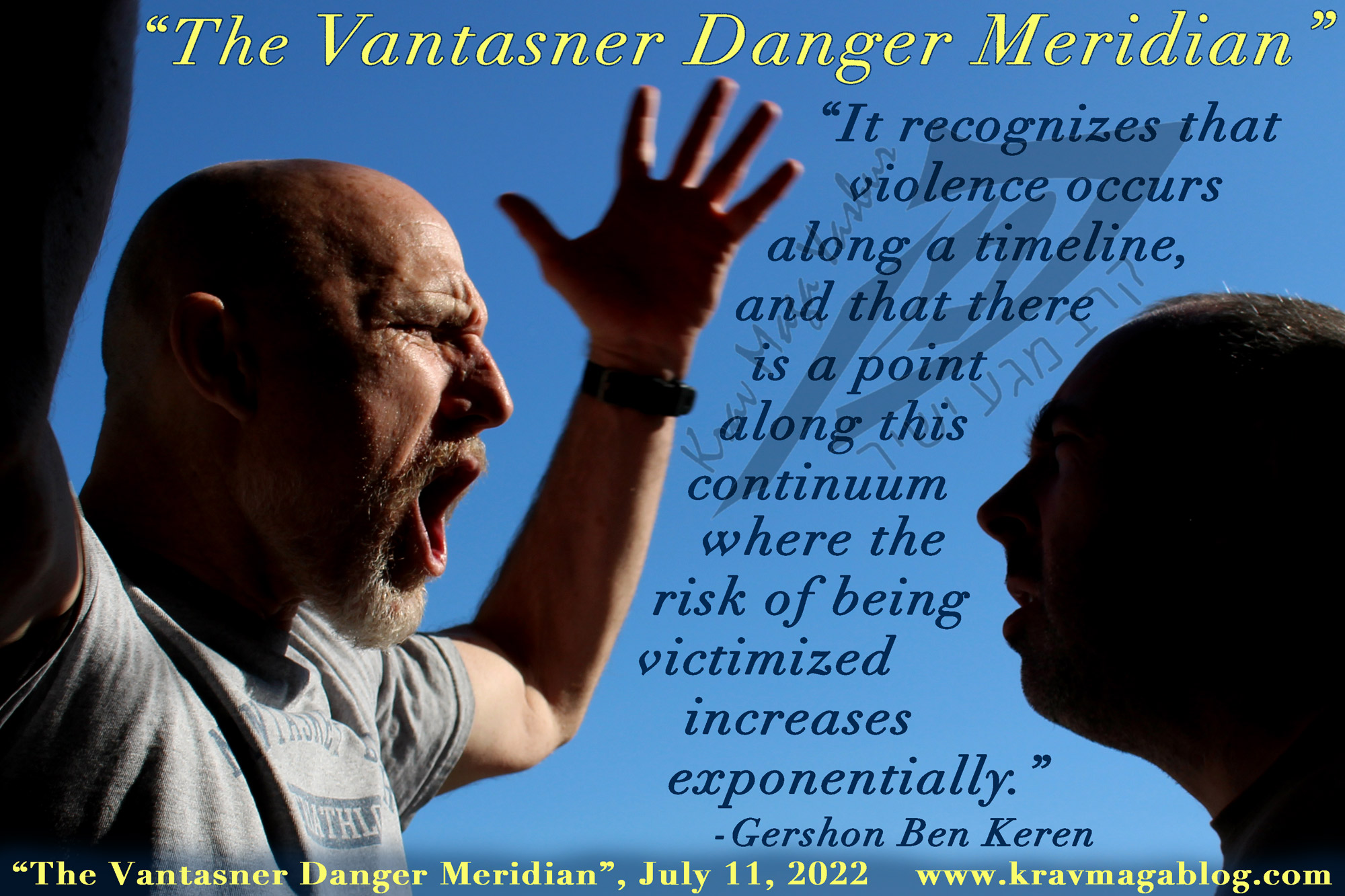Author: Gershon Ben Keren

I sometimes get asked about violence, and fight scenes in films and tv shows, and whether certain scenes capture/reflect real life violence etc., and/or whether the security tactics that a character uses to evade danger etc., are ever applied in real life etc. When looking at media violence it should be remembered that its goal is for entertainment purposes, and that the director will frame a shot in order to tell a story e.g., they will have the protagonist hold their gun close to their face, in order to communicate to the audience, the intensity of the scene, and that something major is about to happen etc. That said, I was recently introduced to, “The Vantasner Danger Meridian”, in the show, “The Patriot”, which although completely fictional and made up, has some foundation in reality, and was an interesting take on a fallacy that is found in psychology, and the General Aggression Model or GAM. In this article I want to investigate further the workings of the Vantasner Danger Meridian, and see how Hollywood sometimes stumbles upon, or creates something that isn’t entirely without foundation.
In the show, the Vantasner Danger Meridian, is defined as being, “the point or line after which danger to your mission and/or sense of self increases exponentially. Often used to demarcate conditions of grave and approaching danger.” Considering this from a violence perspective, it recognizes that violence occurs along a timeline, and that there is a point along this continuum where the risk of being victimized increases exponentially e.g., a moment of commitment from an aggressor. This can be seen in both premeditated acts of violence (asocial), as well as spontaneous ones. In a premeditated act of violence, which involves a degree/level of planning and/or orchestration in order to achieve a goal, such as engaging in a street robbery to acquire another person’s assets such as a wallet or mobile phone etc., a process is followed, and with the completion of each step, the risk of being victimized increases. The first step a motivated offender takes is that of a “Search” phase i.e., they must choose a location (or recognize the suitability of the one they are in) where they can engage in the search for a potential target to victimize. The next phase is that of victim-selection, where a suitable target is identified. It could be that during the surveillance phase, they are discarded, and the selection process begins again, however if they are confirmed as being suitable, the risk of them being victimized, starts to increase exponentially i.e., the Vantasner Danger Meridian has been reached/pass. If the predatory individual now engages in a synchronization of movements (SOM), and starts to correlate their movement with that of the target, the danger of being involved in a violent incident is almost confirmed e.g., it will be environmental and situational factors that dissuade them from committing to the strike phase, where they directly engage either verbally and/or physically with the person they have selected e.g., a suitable guardian, such as a security officer or law-enforcement officer drives by etc.
The General Aggression Model (GAM) – Anderson and Bushman - looks to explain all types of violence, and not just that which is criminal, such as when a law-enforcement officer legitimately uses force, or a country goes to war etc. It recognizes both the characterological factors that are at play, such as a person’s individual propensity to use violence, and the situational inputs that exist in violent incidents, such as a triggering event, like somebody having a drink accidentally spilt over them, and the presence of others who may affect social status etc. The GAM also recognizes that there is often a “Violence Escalation Cycle”, which comprises of sets of interactions between the parties involved, based on the various perspectives that each hold e.g., party A spills a drink over party B, party B shouts at Party A to be more careful and watch themselves etc. Party A believes this is an overreaction and tells Party B that they are being unreasonable and need to calm down etc., Party B, now decides to push Party A, believing this is a justified and reasonable response to being told/ordered to calm down. Party A sees this as a complete overreaction and, unjustified so they push Party B back. In response Party B throws a punch at Party A etc. Somewhere in this escalation, the Vantasner Danger Meridian (that completely fictional “line”) gets crossed. This is somewhere around the point where the Sunk Cost Effect/Fallacy, kicks in for one of the parties. The sunk cost fallacy involves pursuing an inferior alternative because significant but non recoverable resources have been invested. In the case of the aggressive interaction and escalation described above, the inferior alternative is the physical fight; unless one party is clearly physically superior to the other both are likely to get hurt in the exchange, and with society as a whole eschewing violence as a means of demonstrating social superiority the rewards for most people are going to be slim. However, the more emotional and psychological resources each party invests, the likelihood of either walking away is significantly reduced. Most forms of social violence have a tipping point, a point at which someone is unable to back down, and this point can be reached very quickly, which is why aggressive spontaneous/social interactions need to be shutdown quickly.
Whilst the Vantasner Danger Meridian, doesn’t actually exist, and was created for comedic effect, it does recognize a very simple truth: that the further a party moves along a timeline, the chances of a violent outcome being reached, increase exponentially. This is why understanding the phases violent offenders must pass through, or the cycles of interactions that emotionally charged persons engage in, is key to avoiding violence. The further you are away from reaching the Vantasner Danger Meridian, the more likely it is that you will avoid being in a physically violent event.